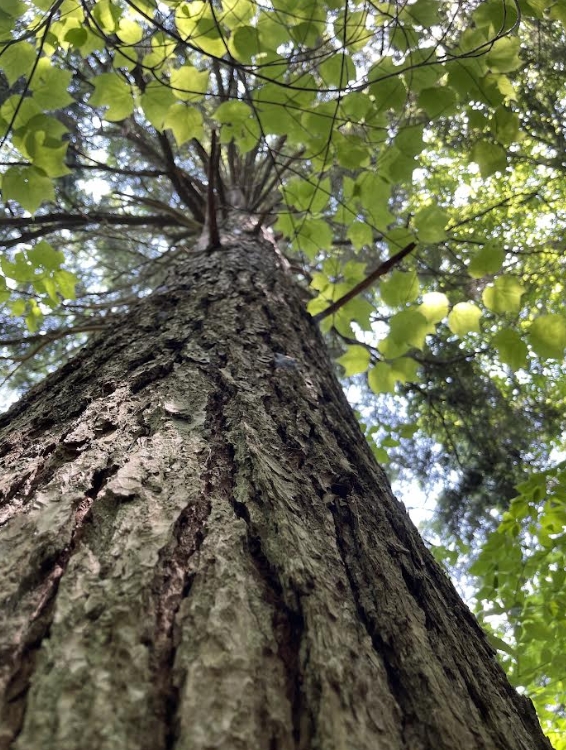
Big Trees, Big Carbon: Why Mature Forests Matter
When discussing a potential Improved Forest Management carbon project with landowners and land managers, a similar misconception of carbon sequestration rates comes up. “Young vigorous stands surely sequester more carbon than old, slower growing stands.” While the visual impact is surely impressive in young trees, often growing 2 feet or more in each growing season, small diameter changes in large mature trees has a much larger impact on carbon storage than immediately meets the eye.
Let’s break it down. A small 8-foot-tall pine tree may put on 2 feet of growth in a growing season. If we also assume the same tree adds ½” of diameter growth, the tree has only added 6.2 pounds of biomass. Now if we look at a much larger 120 foot tall, 36” diameter pine tree that only increases by 1/8” diameter over the growing season, a much larger 182 pounds (!) of biomass storage occurs (1).
While the typical response here is, yes, on a tree-by-tree basis much less storage occurs, young vigorous stands have more stems per acre. But as you can see in this example, you would need the equivalent of 29 small pines to equal one large tree. At this point, we’d need to dive into stocking charts and silvicultural prescriptions to determine if that level of trees per acre is achievable or wise.
This is not to say that young stands aren’t doing the job. Clearly, they are important for the diversification of stand structures and age classes while providing a plethora of benefits for wildlife that larger more mature stands can’t provide. Our goal is to highlight the importance of fostering larger mature stands on the landscape to sequester carbon long term. If you’re ready to explore how carbon sequestration can support your land management goals, reach out to the forestry specialists at The Climate Trust.
References: